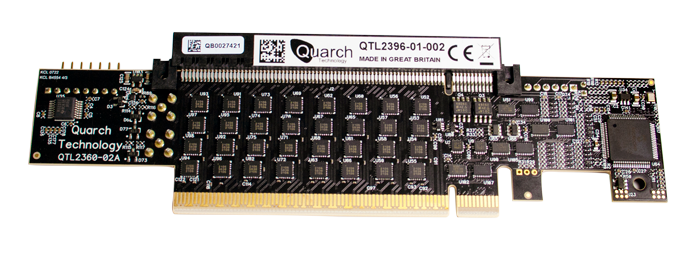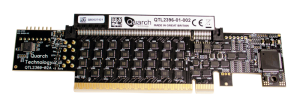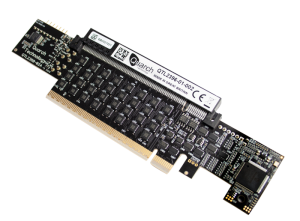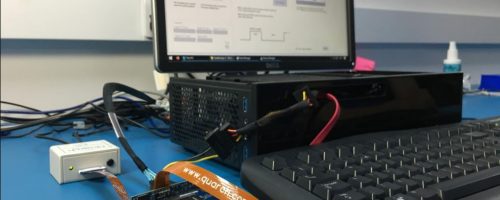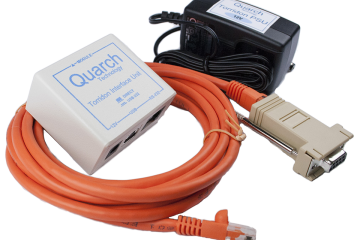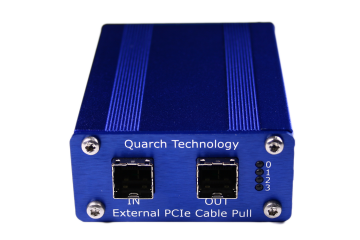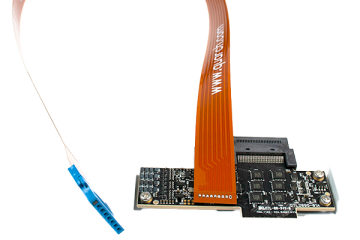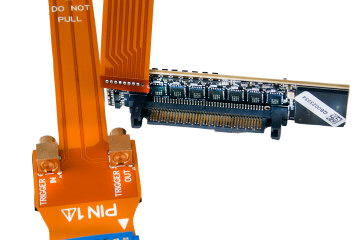Gen5 PCIe x16 Breaker Module
Part Number: QTL2357, QTL2358. QTL2396, QTL2798
Product Details
Prepare to test PCIe Gen5 drives with the Gen5 PCIe x16 Breaker Module, featuring hot-swap, lane configuration, fault injection, signal driving, and power injection automation for PCIe Gen5 slots.
Fitting into a standard x16 PCIe slot, this PCIe module allows advanced, repeatable testing of PCIe devices. Controlled from the TestMonkey GUI or Python, the module is simple to integrate into your test plan. With full control over every active PCIe pin, you can perform:
- Full hot-swap control of an attached PCIe card
- Individual control of all lanes, side-band, power and present pins
- Glitching of any signals
- Active driving of selected sideband signals
- Power margining and measurement via an additional Quarch power module
- Optional external triggering
Note that the ‘inrush limit’ version is now our default part number and will be the best option for most customers. A version without inrush limit is available if you want to stress-test the power delivery system.
This module comes with a 40cm interface cable and requires a separately-purchased controller.
Features
- Independent control of every signal including each side of differential pairs
- Programmable control over connection timing and pin bounce
- Glitching of data signals down to 50nS
- Allows injection of power from an external source
- Driving and monitoring of selected sideband signals
Technical
- Supports PCIe 1.0a, 1.1, 2.0, 3.0, 4.0 and 5.0
- Supports x1 to x16 device cards
- Requires Quarch array controller or interface kit.
- Optional External triggering
- Optional inrush current limit
Versions
QTL2396
This is the standard module, and has the inrush current limit, preventing high inrush to a DUT, which might otherwise cause a brownout on the host rails
QTL2798
This is the basic version with addition of external triggering and SMA cables, allowing you to attach to 3rd party test equipment for precise test timing and monitoring of sideband signals
QTL2357
This is the QTL2396, but EXCLUDING the inrush limit. This can be useful in cases where you want to stress the power rails as much as possible
QTL2358
This is QTL2798 but EXCLUDING the inrush limit. This can be useful in cases where you want to stress the power rails as much as possible
Evaluate this product
Evaluate now
